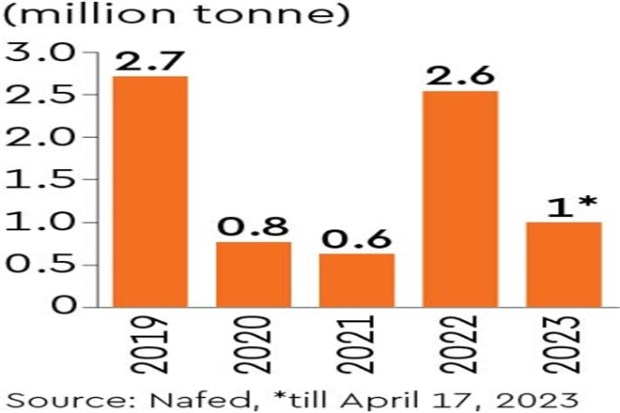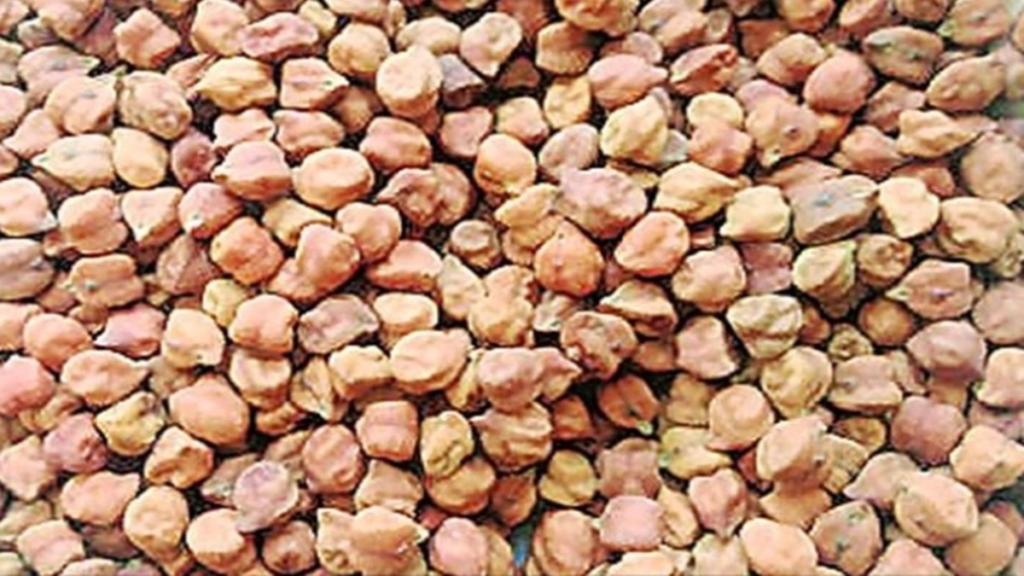Gram has 0.6% weightage in retail food inflation. Inflation in chana declined by 1.63% on year in March 2023. A major chunk of the country’s production of chana goes into further processing for producing gram flour (besan).
The pace of procurement of chana, or gram, under the agriculture ministry’s price support scheme for the 2023 rabi season has gathered momentum, but mandi prices have been ruling below the minimum support price (MSP) of Rs 5,335/quintal.
Traders say that higher carry-forward stock from the previous year, with farmers’ cooperative Nafed and farmers still holding onto stock in anticipation of higher prices later, is keeping mandi prices below the MSP level.
Prices are currently ruling in the range of Rs 4,800-5,100 per quintal.
Total purchases from farmers have crossed 1 million tonne (MT) as on Monday. Nafed is likely to procure around 2 MT of chana by the end of the month. As per the Nafed data, the value of the total chana procured from 500,000 million farmers by paying MSP has been Rs 5,349 crore.
“Despite the government procurement through farmers’ cooperative Nafed and suspension of open market sale of the previous year’s stock by the cooperative, chana prices are still trading below the MSP,” Harsha Rai, head, Mayur Global Corporation, a leading pulses trading firm, told FE.
The farmers’ cooperative has so far purchased 0.44 MT of chana from farmers in Maharashtra, 0.19 MT in Gujarat, 0.18 MT in Madhya Pradesh, 0.06 MT in Karnataka and 0.05 MT in Telangana since last month.

Currently, against the government’s buffer stock norm of 2.3 MT, Nafed had 2.2 MT of pulses. Of this, the chana stock is 1.6 MT, which was procured in the previous years.
According to the agriculture ministry’s second advance estimate, chana production is pegged at a record 13.63 MT for the 2022-23 crop year (July-June). Chana has around 50% share in the country’s pulses production.
Traders have stated that recent untimely rains and hailstorms damaged a small percentage of chana crop in some parts of Madhya Pradesh and Rajasthan.
Gram has 0.6% weightage in retail food inflation. Inflation in chana declined by 1.63% on year in March 2023. A major chunk of the country’s production of chana goes into further processing for producing gram flour (besan).
Meanwhile, out of 1.5 MT of chana offered to states from the buffer stock, at a discounted price of Rs 8/kg, for distribution through the social sector programme last year, around 1 MT has been procured by states including Gujarat, Madhya Pradesh, Kerala, Andhra Pradesh and Tamil Nadu.
In August last year, the Cabinet had approved the disposal of 1.5 MT of chana from the surplus buffer stock for distribution through various social sector schemes — the public distribution system, mid-day meal schemes, etc — to create space for pulses to be procured in the current season.
The Commission for Agricultural Costs and Prices (CACP), in its report on price policy for rabi crops for the marketing season 2022-23, has stated that Nafed often offloads pulses in the market at discounted prices and this leads to a sharp decline in market prices of the commodity.
The commission has stated it was highly desirable to fix a reserve price that is linked to MSP, for disposal of stocks similar to wheat and rice, under the Open Market Sale Scheme being implemented by the Food Corporation of India.

Source:financialexpress.com


